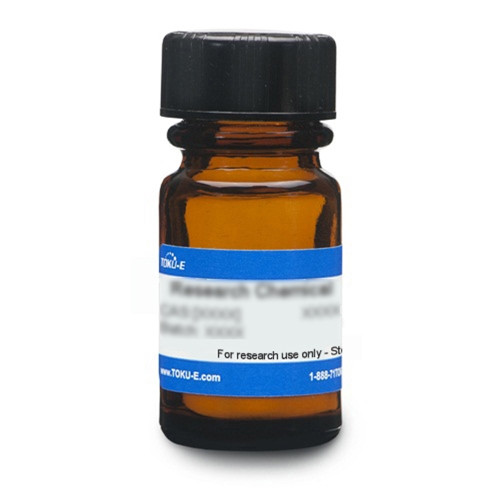Ciprofloxacin Hydrochloride is a broad-spectrum, second-generation, 4-fluoroquinolone antibiotic that targets the bacterial enzyme DNA gyrase. It is effective against Gram-positive and Gram-negative bacteria and Mycoplasmas. Ciprofloxacin Hydrochloride is freely soluble in aqueous solution.
We also offer:
- Ciprofloxacin (C031)
| Mechanism of Action | Fluoroquinolone antibiotics target bacterial DNA gyrase (topoisomerase type II), an enzyme which reduces DNA strain during replication and is essential for DNA packaging, transcription, and replication. Thus, DNA synthesis and cell division is inhibited. |
| Spectrum | Ciprofloxacin is a broad spectrum antibiotic targeting a wide variety of Gram-positive and Gram-negative bacteria. It is also effective against Mycoplasmas. |
| Microbiology Applications | Ciprofloxacin Hydrochloride is commonly used in clinical in vitro microbiological antimicrobial susceptibility tests (panels, discs, and MIC strips) against Gram-positive and Gram-negative microbial isolates.
|
| Plant Biology Applications | Garlic protoplasts were cultured in medium containing Ciprofloxacin, and the compound was successful at preventing microbial growth and was not toxic to protoplasts (Fellner, 1995). |
| Eukaryotic Cell Culture Applications | Mycoplasma-infected leukemia cell lines were cultured with 10 µg/ml ciprofloxacin for 14 days (Gignac et al 1991). Murine plasmocytoma cell lines X63-Ag8 653 were experimentally infected with seven different species of Mycoplasma and eradication was found with 10 µg/ml Ciprofloxacin. Wild-type lab infections of human cell lines HL-60 and U-937 were eliminated with 12 days of treatment. No side effects were seen in cell cultures (Schmitt et al, 1988). |
| Cancer Applications | Two transitional cell carcinoma cell lines, MBT‐2 and T24, were used in an in vitro study of the effects of Ciprofloxacin on cell proliferation, and the compound was found to inhibit cell proliferation in a dose-dependent manner (Ebisuno et al, 1997). |
| Molecular Formula | C17H18FN3O3 · HCl· H2O |
| Impurities | Sulfate: ≤ 0.04% Fluoroquinolinic acid: ≤0.2% Ciprofloxacin ethylenediamine analog: ≤0.2% Any other impurity: ≤0.2% Total Impurities: ≤0.5% |
| References | Ebisuno S, Inagaki T, Kohjimoto Y and Ohkawa T (1997) The cytotoxic effects of fleroxacin and Ciprofloxacin on transitional cell carcinoma in vitro. Cancer 80(12):2263-2267 PMID 9404703 Fellner M (1995) Influence of the antibiotic Ciprofloxacin on culture of Allium longicuspis callus-derived protoplasts. Ann. Bot. 76: 219-223 Gignac SM, Brauer S, Hane B, Quentmeier H, and Drexler HG (1991) Elimination of mycoplasma from infected leukemia cell lines. Leukemia 5(2):162-165 PMID 2020199 Ridgway GL, Mumtaz G, Gabriel FG, and Oriel JD (1986) The activity of Ciprofloxacin and Other 4-Quinolones Against Chlamydia trachomatis and Mycoplasmas In Vitro. In: Neu HC, Reeves DS. (eds) Ciprofloxacin. Current Topics in Infectious Diseases and Clinical Microbiology, vol 1. Vieweg+Teubner Verlag, Wiesbaden Schmitt K, Däubener W, Bitter-Suermann D, Hadding U(1988) A safe and efficient method for elimination of cell culture mycoplasmas using Ciprofloxacin. 109(1):17-25 PMID 3282011 Wolfson, JS and Hooper DC (1985) The Fluoroquinolones: Structures, Mechanisms of Action and Resistance, and Spectra of Activity in Vitro. Antimicrob Agents Chemother. 28(4):581-586 PMID 3000292 Zeiler HJ and Grohe K. (1986) The in vitro and in vivo activity of Ciprofloxacin. In: Neu HC, Reeves DS (eds) Ciprofloxacin. Current Topics in Infectious Diseases and Clinical Microbiology, vol 1. Vieweg+Teubner Verlag, Wiesbaden |








